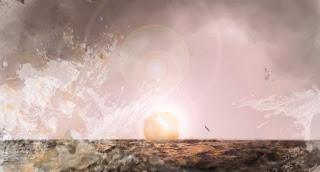
I learned to sew as a child.
I had no video game console at home, so to entertain myself, I either read books, drew pictures or traveled to old-fashioned arcades where coin-op games were still set-up in a type of electronic topiary maze. Once there, I would wander the labyrinth until I found a favorite and then waste whatever quarters I had on a few minutes of play.
Getting to the arcade was difficult, so I rarely went. I had a few friends with consoles, but visits to their homes were infrequent, and I felt like a bad guest or an awkward opportunist to insist upon playing every time I came over. Excited about the idea of games, if not the games themselves, I found other ways to play what I imaged the games to be. I would draw out worlds on long horizontal scrolls and rotate them using empty paper towel rolls to simulate side-scrolling games like Defender. I would attempt to create physical versions of the games, like vertical dodgeball, by dropping rubber balls from the top of the bleachers to simulate classics like Centipede or Breakout.
The best simulation, however, involved my mother’s sewing machine. I would draw maps of various race courses (usually turning my home town into a Le Mans route) and then load one of the drawings into the sewing machine like a very stiff piece of fabric. The sewing machine looked to me like a car; it had a gas peddle, a gearshift, and running lights. I would load the map into the machine, slam down the pressure foot, kick the gearshift into place, and then stomp on the gas. I was able to pull the paper through with gently guiding fingers to negotiate every curve and turn in the road. Difficult corners could be manipulated by stopping the progress with the needle still in the down position, lifting the foot, rotating the paper, engaging the foot again, and then roaring down the road. I could parallel park using the reverse gear, and simulated jumps by lifting the foot and pulling the paper to a new position and then re-engaging. My results were mapped by the dotted line of the stitching thread. I could see instantly if I ran off of the track or was soft or fat around a corner. With only a little practice, I found I could pull any curve imaginable. I was creating the arching loops that would become the foundation of my initial understanding of sewing. When our clothes would rip, I would mend them. I was always on the machine racing anyways, so why not try an “off-road” game and race the machine across a field of denim or corduroy?
Mending became sewing, and sewing became design. I would return cans for change and then bicycle to the used clothing store to buy essential equipment (old dress shirts, prom dresses, belts with decent buckles) and then use them as the raw materials for my collections.
No one wore what I created, the designs were too sexualized, or strange, or in poor taste, but I did not lose hope. There would one day be a place for my work, even if I hadn’t yet found it.







